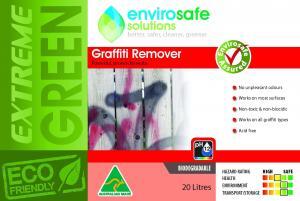 Since the discovery of uranium at Kakadu in the early 1950s, mining nearthe World Heritage-listed site has been controversial. The Ranger uranium mine has been under pressure to make its operations more environmentally-friendly. Liquid wastewater contamination fears from its pits this month prompted Energy Resources of Australia (ERA) to unveil a $500 million rights issue.
Since the discovery of uranium at Kakadu in the early 1950s, mining nearthe World Heritage-listed site has been controversial. The Ranger uranium mine has been under pressure to make its operations more environmentally-friendly. Liquid wastewater contamination fears from its pits this month prompted Energy Resources of Australia (ERA) to unveil a $500 million rights issue.
Major uranium minor ERA hopes a $500 million rights issue this month will help solve wastewater issues that have hampered its operations.
Heavy rains which deluged north Australia early this year flooded the pits at ERA’s Ranger mine, prompting fears contaminated wastewater could spill into the surrounding World Heritage-listed national park, which includes tropical wetlands.
ERA announced that about $270 million of the rights issue would fund an expansion of wastewater treatment at Ranger, including a brine concentrator to convert wastewater into an environmentally-friendly liquid. The remaining funds would be used for further exploration around the mine, which is surrounded by the Kakadu National Park.
“ERA takes water management very seriously,” ERA chief executive Rob Atkinson has said.
“This capital allows ERA to progress the implementation of our water management strategy, which includes construction of a brine concentrator and other initiatives, in as timely a manner as possible.”
On average the Ranger mine supplies about 10 per cent of the world’s uranium, but has been plagued by more than 150 leaks, spills and licence breaches since opening in 1981.
Proponents of the green revolution have argued that mining was not compatible with the national park. Mining companies have been compelled to develop extreme green guidelines for mining and exploration, including minimising water and soil contamination, dust suppression and chemical reduction through the use of eco-friendly industrial liquids.
Kakadu mining history
The first uranium was discovered in Kakadu at Coronation Hill in 1944 and small-scale mining commenced in the mid-1950s.
During the 1970s new deposits were discovered but it was not until 1980 that the Ranger Uranium Mine was completed. The mine site and nearby Jabiluka township were excluded from the Kakadu National Park when it was established in 1981.
Cultural and environmental concerns
UNESCO’s World Heritage Committee announced in 1998 that it proposed to list Kakadu National Park as ‘in danger’ due to uranium mining. Lobbying by the Federal Government – which claimed other listed areas were also adjacent to mining – meant this tag was not adopted.
Mining benefits
Australia possesses 24 per cent of the world’s uranium deposits and uranium sales between 2000 and 2005 alone generated $2.1 billion for the economy.
Energy Resources of Australia – which is partly owned by Rio Tinto – pays 4.25 per cent of its gross sales revenue plus an annual land rent to the Federal Government, which is distributed to Aboriginal groups in the Top End. Since 1980 more than $200 million in royalties have been paid.
The proposed expansion of wastewater treatment capabilities at Ranger highlights efforts by the mining industry to minimisethe environmental cost of tapping into Australia’s underground resources. Environmental cleaning products company Envirosafe Solutions has been proud to support best environmental practice at mine sites by supplying low-toxic, eco-friendly industrial products. For more information about Envirosafe Solutions and its range of eco-friendly liquid products contact 1300 88 90 70 or email info@evss.com.au.
Sources:
http://en.wikipedia.org/wiki/Uranium_mining_in_Kakadu_National_Park#Benefits_of_uranium_mining




















